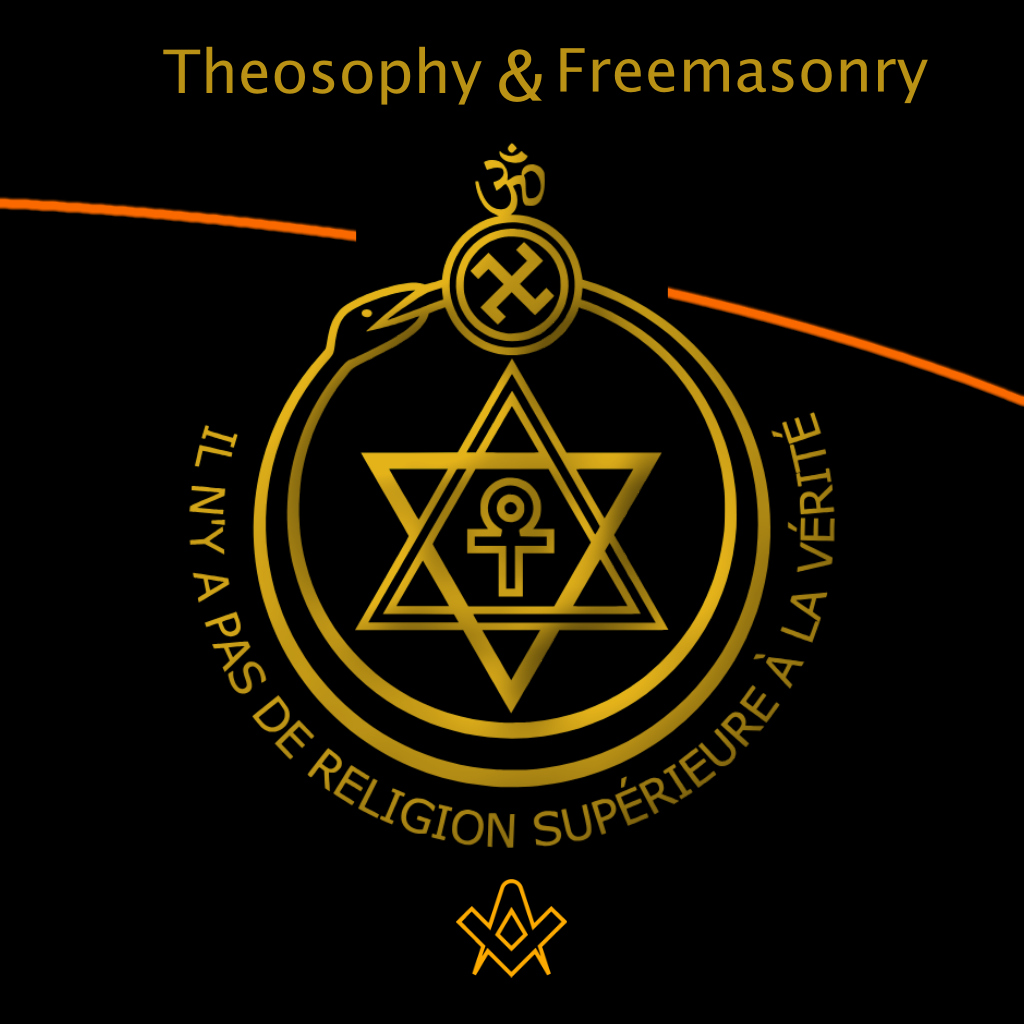The Seal of the Theosophical Society is composed of a number of symbols, all of which have been used from ancient times to express spiritual and philosophical concepts about humanity and the universe.
Exploring the links between two fraternal organisations.
They can be found in a variety of forms in the great religions of the world and their universality is further shown by their appearance in widely separated cultures.
The symbols it contains can all be found depicted in paintings and carvings from ancient civilisations across the world, and have nothing to do with any social or political movements.
The purpose of this paper is to examine the symbolic meanings of the six individual symbols and where possible highlight any similarities with Freemasonry and demonstrate any links between these organisations.
The Theosophical Society was founded by Helena Petrovna Blavatsky, Henry Steel Olcott, William Quan Judge, and others in New York City on November 17, 1875. In 1882 the international headquarters of the Society was established at Adyar, near Madras.
This remains the headquarters for the Society, which is now established in fifty countries of the world.
“Today, the society is composed of students, belonging to any religion in the world or to none, who are united by their approval of the Society’s Objects, by their wish to remove religious antagonisms and to draw together men and women of goodwill whatsoever their religious opinions, and by their desire to study religious truths and to share the results of their studies with others.” [1]
Three Objects of the Theosophical Society are as follows :
To form a nucleus of the universal brotherhood of humanity without distinction of race, creed, sex, caste, or colour.
To encourage the study of comparative religion, philosophy, and science.
To investigate the unexplained laws of nature and the powers latent in man. [2]
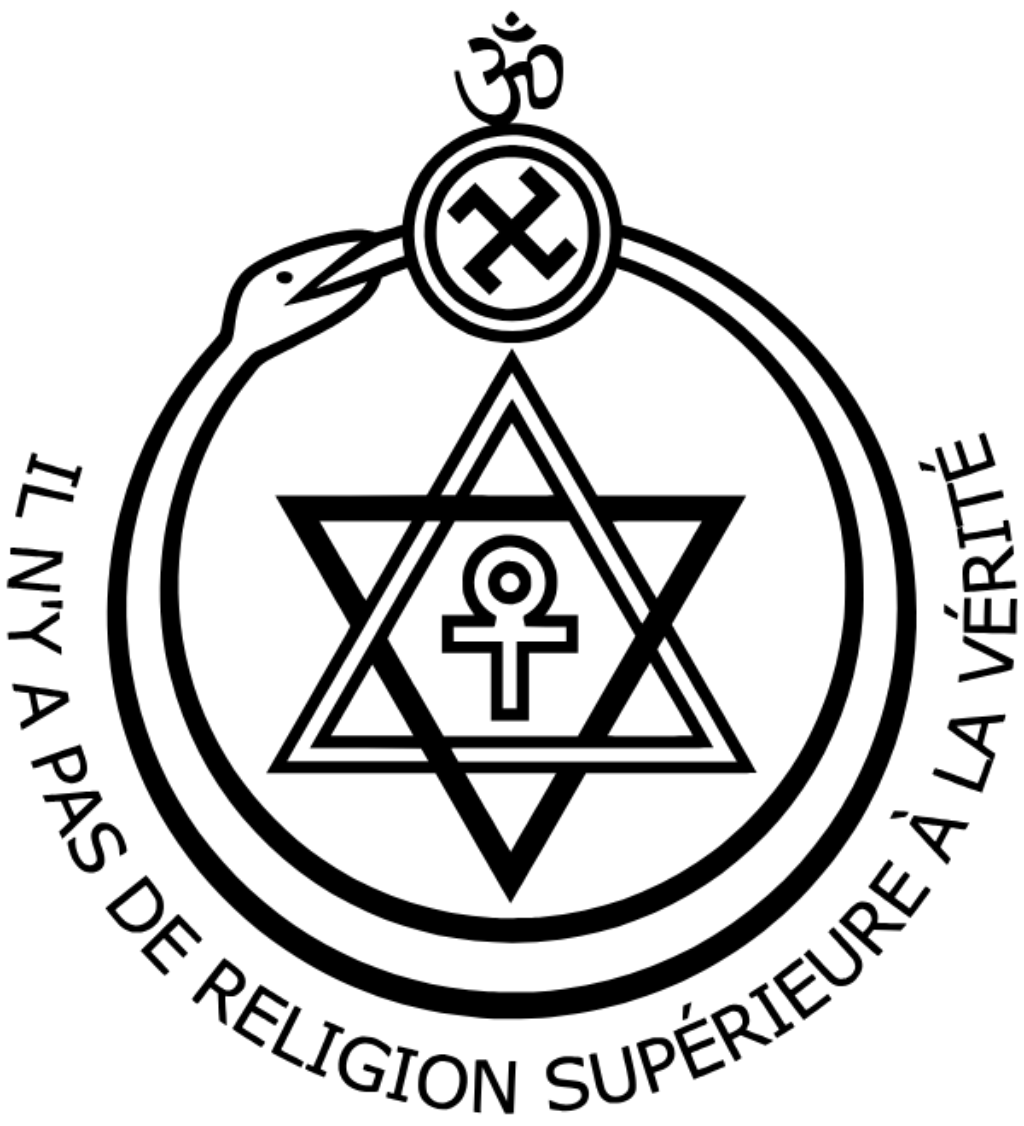
Theosophical Society
IMAGE LINKED: wikimedia Attribution 4.0 International (CC BY 4.0)
The seal of The Theosophical Society was adapted from the personal seal of Helena Petrovna Blavatsky which was used by her before the Society was founded.
The symbols it contains are very ancient and originated from a number of world-wide wisdom religions and used to express universal ideas being part of the universal mystery language that can convey to the student of Theosophy the sacred truths of nature.
It consists of six distinct aspects and are from the top the Sanskrit word AUM or Om, a swastika enclosed in a circle below it, a serpent swallowing its own tail, also known as the Ouroboros, a six pointed star, the Seal of Solomon or the Star of David, within the star is an Egyptian cross known as an Ankh.
Around it is the motto “There is No Religion Higher Than Truth,” one that was adopted from the motto of the Maharajah of Benares.
The Aum: At the top of the seal is the word Aum or Om, the sacred word of Hinduism in Sanskrit characters, this word is of profound significance being an emblem which is said to symbolises the Word or Logos, the ineffable Reality which is the source of all existence.
In the Gospel according to John, in the Holy Bible, we read: ‘In the beginning was the Word, and the Word was with God, and the Word was God’. This sacred word is of great power and should only be spoken with the greatest of reverence.
Whilst the Aum is the sacred word and sacred symbol of Hinduism it has also been adopted by the other three main religions of India, i.e. Jainism, Buddhism, and Sikhism. The Hindu scriptures teach that Aum is the symbol of Brahman.
“Brahman is a term for the Supreme Self, the Infinite, the Absolute, the Divine Allness, the Ultimate Reality. Brahman is all and in all. Brahman is “ONE without a second” and that It is not a Being but “the divine Principle of Existence.” It is the ONE LIFE, the Supreme Pure Divine Consciousness.” [3]
The original seal of the Society didn’t include the motto, this was added in 1879 after H. P. Blavatsky relocated to India.
The Swastika: This ancient symbol is seen here placed at the head of the serpent, and is one of the numerous forms in which the symbol of the cross is depicted.
It represents a fiery cross, with its arms of whirling flame rotating clockwise to represent the forces of nature continuously creating life through which the evolutionary process takes place.
In the religions of the world which recognise the three aspects of Deity, the swastika is associated with the Third Person, and is known as Shiva in Hinduism and the Holy Ghost in Christianity.
This is a very ancient symbol, and is found all over the world—in India, as well as the American Indians, it can be seen in numerous sand paintings of the Navaho Indians. In Sanskrit it is called a swastika, meaning “good.”
“It should be emphasised at this point that the swastika was never thought of in any way as being an evil or “dark” symbol until Hitler misappropriated it as the symbol of Nazism.
Hitler also misappropriated and misrepresented the word “Aryan” – using it to mean a so-called “perfect race” of blonde haired, blue eyed, fair skinned people – whereas in its actual and historical sense, which is the sense in which the term is used in Theosophy, the word “Aryan” means “Indian.”
Ancient India was called Aryavarta and the Aryans were the inhabitants of this land.” [4]
Nevertheless and despite its modern negative connotations, Hindus, Jains, and Buddhists all over the world retain their right to the use of the swastika as a spiritual symbol.
In H. P. Blavatsky’s words: “Within its mystical precincts lies the master-key which opens the door of every science, physical as well as spiritual. It symbolizes our human existence, for the circle of life circumscribes the four points of the cross, which represent in succession birth, life, death, and immortality”. [5]
A search for any links or usage of the Swastika in Masonic ritual or history is not very defined, there are some vague references to it in a number of books written over a hundred years ago and I am aware that one of the pews in Sheffield Cathedral made as a memorial to freemasons who lost their lives in WWI has the sign carved into it.
I am sure all those Mark Masons will know the symbol was used by master masons on their work in the great Cathedrals and Churches throughout Europe.
But apart from these most other references are very negative and anti-masonic. However, the use and explanation of the swastika (or should I say Fylfot) in SRIA Grade of Practicus ritual is very detailed with an explanation of the use of colours woven in with its use described in its ritual.
The Serpent: Also known as the Ouroboros is a timeless symbol of the highest spiritual Wisdom. Swallowing its tail, it is a symbol of regeneration. It is the self-born, the circle of infinite wisdom, life and immortality.
The circle is an ancient symbol of eternity and represents the Absolute, this symbol is found in most world religions and philosophies. The Hindus call their wise men ‘Nagas’ (a word meaning serpent). Christ encouraged his disciples to be as ‘wise as serpents.’
The sacred Cobra seen on the foreheads of a Pharaoh of Egypt denoted his initiation into the sacred rites of the hidden Wisdoms. The symbol is found also in ancient Greece, and West Africa, and among Buddhists and Jains, Gnostics and alchemists.
“It is the eternal Ananta Sesa, the serpent of Eternity the couch of Vishnu during Pralaya ( a period obscuration or repose)”. [6]
Students of Ancient Freemasonry will not be surprised that the Ouroboros has been used as an important symbol throughout its history. It can be seen on the Mark Master Mason Token or Penny given to every candidate at his elevation.
The following quote from Manly P Hall, 33 Degree Mason in his book The Secret Teachings of All shows how much its use in Freemasonry was venerated.
“Now at least we know the truth about Freemasonry! Its “legitimate symbol” is the serpent, “The serpent is the symbol and prototype of the Universal Saviour, who redeems the worlds by giving creation the knowledge of itself and the realization of good and evil.”
Albert Pike, in his Morals and Dogma, teachings of the 28th Degree, Knight of the Sun, or Prince Adept;
“It is the body of the Holy Spirit, the Universal Agent, the Serpent devouring its own tail.”
The Interlaced Triangles: These are also known as the Double Triangle, the Seal of Solomon, and the Sri Yantra and Satkona Chakram in the Indian tradition.
They symbolise the three parts of the Trinity in various religions and personified in Christianity as Father, Son and Holy Ghost and in Hinduism as Shiva, Vishnu, and Brahma.
In alchemy the six pointed star / triangle or hexalpha symbolise the four elements plus the sphere of the Universe. The interlaced triangles also signify the bipolarity in nature, that of spirit and matter, or male and female. The apex of the white triangle represents the divine monad.
The darker of the two triangles, which is pointing downward symbolises the descent of the life of Spirit into matter, whilst the lighter triangle, which is pointing upwards symbolises the
ascent or evolution of that life out of matter into Spirit, bringing it back to its devine origin. The interlaced triangle in Pythagorean symbolism is seen as the six-pointed star, embracing spiritual and physical consciousness, the symbol of creation.
When depicted within the circle of the serpent, the figure represents the universe and the manifestation of Deity in time and space.
In Freemasonry the Seal of Solomon is typically associated with the Holy Royal Arch degree, as can be seen by its jewel. Duncan Moore goes into great detail…in his book In Search of that which was lost “we have, however, to be aware of the symbolism of the two intersecting triangles…..one points upwards and this represents God; and the other goes downward and this is mankind. They have also been expressed as heaven and earth and the spiritual and material worlds. [7]
The Ankh: In the centre of the two interlaced Triangles we see the Ankh (or the Crux Ansata). This is composed of a circle on the top of the Tau Cross, a symbol well recognised in Freemasonry.
The Tau Cross, also known as the triple tau, is one of the most important symbols of Royal Arch Masonry. The Ankh is an Ancient Egyptian symbol of great antiquity which portrays the resurrection of the spirit, and can also be expressed as the triumph of life over death, of spirit over matter or as good over evil.
The belief in resurrection and immortality can be found in all the great religions of the world. The Ankh is often seen in Egyptian wall and tomb paintings where it is depicted as being held in the hand, the Egyptians believed that one’s earthly journey was only part of an eternal life, the ankh symbolises both mortal existence and the afterlife. It is one of the most recognisable symbols from ancient Egypt and dating from the Early Dynastic Period (c. 3150 2613 BCE) with the rise of the cults of Isis and Osiris.
Over the years it has been claimed that the Christian cross was copied from the ankh. But despite its popularity, I believe this claim is false as the Early Christians used the fertility symbol of the fish as a sign of their faith.
They would not have considered using the image of the cross, a well-known form of execution.
The Triple Tau was originally the letters T and H, which can be observed on old Royal Arch tracing boards as well as records dating from 1767 and actually means Templum Hierosolyma, or the Temple of Jerusalem.
The Motto: On the outside of the seal we see the Motto of the Theosophical Society.
“There is no religion higher than Truth.”
Truth is surely the quest of not only Theosophists whatever his or her faith, but also Freemasons too.
The original seal of the Society did not include the motto. This was added in 1879 after H. P. Blavatsky relocated to India. The motto is a translation in English of the family motto of the Maharajahs of Benares –“ Satyat nasti paro Dharmah” – “There is no religion higher than Truth.”
“Since Theosophy states that spiritual Truth is universal, it asserts that it transcends and pre-dates all manmade religions.
Religions have a part to play but no religion contains the whole Truth, although all of them contain some of it, however distorted and garbled it may have become under their representation.
To point out and reveal the one esoteric Truth, the one esoteric Teaching, which underlies all the world’s religions…this is one of the major aims of the Theosophical Movement. Thus this motto was adopted as being truly fitting and illustrative.” [8]
Links to Freemasonry. As I have mentioned above the seal of the Theosophical Society shares a number of individual symbols with Freemasonry and SRIA. The Serpent or Ouroboros, The Seal of Solomons, The Swastika and even the Ankh can all be found embedded in our rituals and symbols.
So my question is what is the links between these organisations? The answer I believe can be found in the members of the Theosophical Society in its early years.
H. P. Blavatsky herself was a supporter and defender of Freemasonry and both her books “Isis Unveiled” and “The Secret Doctrine” contain many references to the Craft, Royal Arch Chapter and the Knights Templars.
The book entitled “The Right Angle” contains extracts on her thoughts on Masonry that she put to paper between 1875 to 1891 which have been compiled by Geoffrey Farthing and published in 2003.
Whilst she was never a member of the fraternity herself she was made an honorary member of the ‘Ancient and Primitive Right of Masonry’ in 1877.
A certificate presented to her by a John Yarker, Sovereign Grand Master, thirty-third degree appoints her to the thirty-third degree.
The other two founding members, Henry Steel Olcott and William Quan Judge also had links with Freemasonry. Frederick “Fred” Hughes Judge, the father of William became a Freemason in 1856.
Whilst “Olcott involved himself in the Masonic, Republican and antislavery movements, all of which coalesced in his later recollections of the John Brown affair. According to Olcott’s story, while at the execution, he was identified as a Northerner and suspected Republican and was forced to rely on the aid of another Freemason in order to flee the town”. [9]
At the outset of the society there was a desire to align its structure more closely to that of Freemasonry “On April 17, 1878, Henry S. Olcott believed, that the TS should be constituted into a Masonic order with Rituals and Degrees.
Its aims would have been to restore vital elements of Eastern mysticism to the craft. By allying it to the history of the Ancient Brotherhood, Olcott believed the TS would endure with permanency. However, this was abandoned when H.P.B. and Olcott moved Headquarters to India.
The TS was growing rapidly, and it was seen as impractical to then merge it into the Masonic framework.” [10]
Other prominent members of the Theosophy movement such Annie Besant and Charles W. Leadbeater (author of ‘The Hidden Life in Freemasonry’ ) became active members of Co-Freemasonry.
This masonic order was introduced in England by Annie Besant who went on to establish the ‘Order of Universal Co-Freemasonry in Great Britain’ in 1902 with the creation of Lodge Human Duty No. 6 in London.
There are also clear links between the Theosophical Society and the Masonic Order SRIA. The first one that comes to mind is Dr William Wynn Westcott “one of the main foundations of our Society.” [11]
Westcott joined the Masonic Lodge at Crewkerne in 1875. After which he spent two years studying Qabalah and other metaphysical subjects. He was a member of a number of masonic orders. He was admitted to Societas Rosicruciana in Anglia (S.R.I.A.) in 1880 joining the Metropolitan College in London. He became Magus of S.R.I.A. in 1890 holding this office until his death in 1925.
He joined the Hermetic Society (founded by Anna Kingsford a close associate of HPB ) in 1886, through his connection with Kingsford, he met HPB in 1887 and soon afterwards joined the society. He was soon admitted to the nucleus of the Theosophical Societies Esoteric Section, established by HPB in 1888, its purpose being “to promote the esoteric interests of the Theosophical Society by the deeper study of esoteric philosophy…’ [12]
William Wynn Westcott’s involvement in the Theosophical Society was such that a close bond was formed that is still strong with Freemasonry today. As an example Westcott was instrumental in working with H. P. Blavatsky on the study of Kabbala, which formed an important part of the Societies Esoteric Section.
Her book “The Theosophical Glossary’ published posthumously in 1892 makes special mention to Westcott, “Kindly helped for a number of Kabalistic terms by W Wynn Westcott Magus Soc Ros etc”. [13]
I appreciate that what I have detailed above is only a drop in the ocean of the range, depth of meanings and links between Freemasonry and the Theosophical Society.
One only needs to look at the Societies objectives to understand how closely related they are to each other.
Blavatsky’s attention to Freemasonry is not surprising. As observed at the beginning of this paper, it is in one sense the major expression of the Western Mystery Tradition and so could hardly have been ignored by her.
A major concern of Blavatsky’s was to show the universality of the Secret Doctrine tradition, under a variety of names and forms. The existence of Freemasonry, especially in its more esoterically inclined forms, was a significant confirmation of her thesis.
A remarkably large number of prominent early members of the Society were Freemasons, generally associated with “official” Grand Lodges of the segregated masculine Order but with strong inclinations toward the esoteric.
Henry Olcott, HPB’s Theosophical twin, was such a one. He served in 1861 as Senior Warden of the Hugenot Lodge, No. 448 of the Grand Lodge of New York, and had been admitted in 1860 as a Companion of the Royal Arch, Corinthian Chapter, No. 159 also in New York.
After the international Order of Co-Freemasonry was popularized among Theosophists by Annie Besant, Masonically inclined Theosophists generally, although not exclusively, gravitated to it. Notably, every international President of the Theosophical Society has been a Freemason, and all since Henry Steel Olcott.
The compatibility of Theosophy and Freemasonry is a factor of their respective focuses. Theosophy is, and has always been, primarily an intellectual activity. Typical Theosophical activities are lectures, classes, and study groups.
That orientation goes back to Blavatsky herself. Freemasonry, however, according to its own traditional definition,
is “a peculiar [that is, particular] system of morality [that is, custom of behaviour, way of life, or practice] veiled in allegory and illustrated by symbols.”
That is, Freemasonry is a symbolic practice. In this way, it is squarely within the tradition of the ancient Mysteries. Because Theosophy and Freemasonry are compatible, they mesh well for those whose preferences incline toward both the Theosophical type of theory and the Freemasonic type of practice.
And finally Blavatsky accorded a special place to Freemasonry among expressions of the Western Mystery Tradition and is why some later Theosophists have followed the lead of her interest in the Craft.
She used Masonic symbols and themes as part of her demonstration that the Wisdom Religion of Antiquity is still alive and, if looked for can still be found in Ancient Freemasonry today. [14]
Co-Freemasonry in the UK
The British Federation of the International Order of Co-Freemasonry Le Droit Humain was the first Federation to be established outside France in 1902, with Lodge Human Duty No. 6 was consecrated by the Grand Master, The V. Ills. S. Marie Martin 33°, assisted by Officers of the Supreme Council, including one of the Co-Founders of the Order, Georges Martin 33°.
The first Master of the Lodge was Annie Besant who would become the first Grand Commander of the British Federation. The British Federation works the Ancient & Accepted Scottish Rite from the 1st to the 33rd degree inclusive.
In addition, the Allied Degrees of Mark, Royal Ark Mariner, Excellent Master, Holy Royal Arch of Jerusalem, Knights Templar and Royal Order of Scotland are worked.
And just like mainstream Masonry there are a number of different rituals in use. There are currently 20 Lodges in the UK, the nearest to us being near Leeds. The United Grand Lodge of England, the oldest of the Grand Lodges, whilst not recognising Co-Freemasonry, states that it does hold informal discussions from time to time with Women’s and Co-Masonic Grand Lodges on issues of mutual concern, [15]
In 2011 the masonic author Julian Rees left UGLE and joined the International Order of Freemasonry for Men and Women Le Droit Humain. He remains a well-published and respected Masonic author.
Links
The Theosophical Society is a worldwide community whose primary Object is the Universal Brotherhood of Humanity without distinction, based on the realisation that life and all its diverse forms, human and non-human, is indivisibly One.
Website: https://theosophicalsociety.org.uk
Book Shop: https://shop.theosophicalsociety.org.uk
Footnotes
References and Credits
1 From the Theosophical Society in England website.
2 From “Missions, Objectives and Freedom”. Theosophical Society Headquarters Adyar website
3 HBP The “The Key to Theosophy”
4 https://blavatskytheosophy.com/esoteric-symbolism/
5 The of Freemasons of Ireland Membership Secret Doctrine HPB.
6 Theosophical Glossary. HPB.
7 In Search of that which was lost. Duncan Moore.
8 Religion, Spirituality and Theosophy by Katinka Hesselink. 2006
9 Grand Lodge registers, 1733-1923.
10 Esoteric schools within the Theosophical movement by Dr Gregory Tillett. a paper presented to the Theosophical History Conference, San Diego in June 1992.
11 SRIA Study Course 2015.
12 as 10
13 Theosophical Glossary, HPB .
14 Blavatski, Freemasonry and the Western Mystery Tradition. John Algeo.
15 The Square Magazine.
Helena Petrovna Blavatsky
Helena Petrovna Blavatsky (1831 – 1891) was a Russian author and cofounded the Theosophical Society in 1875. Born into an aristocratic family of Russian-German descent in Yekaterinoslav, then in the Russian Empire (now Dnipro in Ukraine), Blavatsky travelled widely around the empire as a child.
Largely self-educated, she developed an interest in Western esotericism during her teenage years. In 1849 travelled around Europe, the Americas, and India. During this period she encountered a group of spiritual adepts, the “Masters of the Ancient Wisdom”, who sent her to Shigatse, Tibet, where they trained her to develop a deeper understanding of the synthesis of religion, philosophy, and science.
In 1873 she travelled to the United States and met Col. Henry Steel Olcott. In 1875 in New York , she co-founded the Theosophical Society with Olcott and William Quan Judge. In 1877 her first book Isis Unveiled was published. In 1880, she and Olcott moved to India.
However due to her poor health she returned to Europe in1885 and established the Blavatsky Lodge in London. It was here that she published The Secret Doctrine, The Key to Theosophy and The Voice of the Silence. She died in 1891 of influenza.
Henry Steel Olcott
Henry Steel Olcott was born on August 2, 1832 in Orange, New Jersey the first of an eventual family of six children. In his later teens his University education had to be abandoned due to the failure of his father’s business in 1851. Olcott then moved to live near some relatives in Ohio where he made a living farming awakening an interest in agriculture. Returning to the East Coast, Olcott studied agriculture to such effect that he became an educationalist and researcher in scientific agriculture. He was even retained by several publications as an agricultural correspondent.
When the American Civil War broke out Olcott enlisted in the signal corps, but his talents were such that he was after a time assigned duties as a Special Commissioner investigating fraud at the New York Mustering and Disbursement Office. Promoted to Colonel and seconded to the Navy Department in Washington, DC, he investigated fraud in the Navy Yards and received an high commendation for his work from the Secretary of the Navy. When President Abraham Lincoln was assassinated Olcott was sufficiently highly thought of as to be appointed to the three-man special commission to investigate the murder.
Olcott resigned from the army in 1865 and returned to New York City to study law. In 1868 he was admitted to the New York Bar and became successful as a specialist in insurance, customs, and revenue cases.
The year 1874 was a turning point in Olcott’s life. Then aged forty-two he met H. P. Blavatsky in October during his second stay at the Eddy Farmstead, and they quickly became friends. By November 1875 the name Theosophical Society had been chosen for a philosophic religious Society they intended to establish, Olcott was elected President and Blavatsky Corresponding Secretary.
Olcott continued his law practice by day, helping Blavatsky with “Isis Unveiled” late into the night whenever they were not busy entertaining visitors. Olcott and Blavatsky prepared to go to India, leaving in December 1878. They moved the headquarters of the Theosophical Society to Adyar in Madras (now Chennai), India.
After Blavatsky’s death, Olcott (President-Founder), William Q. Judge (Vice-President and cohead of the Esoteric Section), and Annie Besant (President of the Blavatsky Lodge, London, and co-head of the Esoteric Section) were the leading officials.
Long-standing personal and policy tensions between Olcott and Judge (similar but far greater than those between Olcott and Blavatsky) magnified the conflicts that eventually split the Society in 1895. After the division, Olcott continued his theosophical work with Annie Besant, traveling widely, lecturing and establishing new Branches, until he injured his leg on shipboard in Europe in late 1906. He returned to Adyar, where he died of heart disease on February 17, 1907.
The SRIA or Societas Rosicruciana in Anglia
The SRIA or Societas Rosicruciana in Anglia (Society of Rosicrucians in England) is an independent society of Freemasons. Admission is limited to Master Masons who are subscribing members of a Lodge under the United Grand Lodge of England (UGLE) or a jurisdiction in amity with Grand Lodge and who accept and accept the fundamental principles of the Trinitarian Christian faith. The SRIA was founded in 1867 by the freemason Robert Wentworth Little and other brethren following the discovery of certain manuscripts in the archives of Grand Lodge. Since then many eminent and scholarly masons have been members and the SRIA is today a well-established and
highly regarded member of the Masonic family of other Degrees and Orders.
William Quan Judge
William Quan Judge was born in Dublin, Ireland on April 13 1851. At the age of seven he was struck down by serious illness and pronounced dead by the family doctor. He confounded everyone when he revived and during a convalescence which lasted a year, he began to show an interest in mysticism. Apparently having taught himself to read he was found engrossed in books on Mesmerism.
He emigrated to the United States with his family when he was 13 years old. At age 21, he became a naturalized citizen. That same year he passed the New York state bar exam. As an attorney, he specialized in commercial law. In 1874, Judge met Col. H. S. Olcott and, through him, H.P. Blavatsky. The following year the three were instrumental in founding the Theosophical Society. Following the publication of HPB’s book, Isis Unveiled (1877), HPB and Olcott went to India to establish the TS there, leaving Judge to carry on the work in the United States. They corresponded regularly and Judge visited India in 1884. After his return he started a monthly magazine, The Path. He wrote many articles which continue to help the theosophical student. His book, The Ocean of Theosophy, is a standard class text. And his rendition of The Bhagavad-Gita is an invaluable devotional book. HPB repeatedly expressed confidence in Judge and gratitude for all of his work. In 1888 Colonel Olcott appointed Judge as Vice President of the Theosophical Society and in 1890 he was officially selected for that office. HPB made him the official representative of the esoteric section in the USA. William Q judge died on March 21st 1896.
Annie Besant
Annie Besant 1st October 1847 20 September 1933 Perhaps the most well-known female Freemason in modern history, Annie Wood Besant laboured zealously for all of Humanity. She was a prolific writer, influential orator, prominent theosophist.
In 1902 she travelled to France with six friends to become Freemasons. There she was initiated, past and raised in Respectable Lodge in Paris. Later that year, Brother Besant helped to bring Co-Masonry to England, founding Lodge of Human Duty No. 6 in London. Through dedication and hard work, Besant rose to the 33rd Degree of Ancient Freemasonry, joined the Supreme Council, and became Most Puissant Grand Commander. In an address delivered in 1909, she explained the importance of initiating both men and women as equals in Freemasonry stating: After migrating to India, Annie Besant also became involved in the Indian Nationalist movement. In 1916, Annie established the Indian Home Rule League and was a leading member of the Indian National Congress. Brother Annie Besant died in 1933 in Adyar, India at the age of eighty-five, her legacy of service and vision of Freemasonry’s true potential continues on as an influence in Universal Co-Masonry
Charles Webster Leadbeater
Charles Webster Leadbeater (1854–1934) was a highly developed clairvoyant. He commenced clairvoyant investigations in 1893, on occasion collaborating with Annie Besant, the second President of The Theosophical Society, and wrote over thirty books on the spiritual life and the psychic Leadbeater’s pursuit of psychic phenomena brought him into contact with A. P. Sinnett, then Vice President of the Theosophical Society, and in 1883 he became a member of the Society.
The next year was a turning point in his life. He came into contact with Madame Blavatsky and decided to go to India with her. In 1895, together with Annie Besant, he began to examine the atomic structure of more than 60 elements. In 1908, in The Theosophist, their discovery of a variation of neon (later called isotope) was reported. The first edition of Occult Chemistry, summarizing their research, was published in 1908.Mr Leadbeater moved to Sydney, Australia, in 1914. In 1915 he was joined by J. I. Wedgwood, a Theosophist and keen ritualist, and was initiated into Co-Freemasonry, which admits men and women alike. Leadbeater recorded some of his impressions in this new field in two book s, The Hidden Life in Freemasonry and Glimpses of Masonic History. Leadbeater settled in Adyar in 1930 and early in 1934 he set out to revisit Sydney. On the way he was taken ill, and he died on 1 March 1934 at Perth, Australia.
C. W. Leadbeater was born in Cheshire, England. His interest in Christianity became stronger over the years and led him to a vocation in the priesthood. He was ordained as deacon in 1878, followed by his ordination as a priest Masonic Certificate issued to HPB in 1877
Article by: Clive Robson
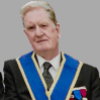
Clive was Initiated into Holywell Lodge No 6283 (UGLE) in the Province of Northumberland , England serving virtually continuously in Office and occupying the WM Chair on three occasions.
Clive joined Plessey Lodge No 6242 (UGLE) and was master in 2022.
In Holy Royal Arch he is a past Z and Treasurer of Croft Chapter No 3310.
He is also a Grand Lodge Officer in the Mark Degree.
Clive is an enthusiastic Masonic researcher and has given numerous talks in and around the Province of Northumberland.
He is also a member of The Theosophical Society in England and Wales.
Recent Articles: Esoteric series
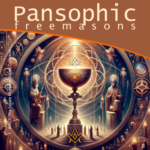 Unveil the secrets of Pansophic Freemasonry, a transformative journey through the ancient mystical traditions. Delve into the sacred realms of Rosicrucianism, Templar wisdom, Kabbalah, Gnosticism, and more. Discover the Graal, the sacred Grail that connects all esoteric paths. Embrace a holistic spiritual quest that reveals the profound mysteries of self and the universe. |
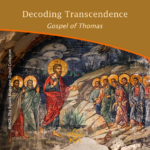 Dive into a spiritual journey where self-awareness is the key to enlightenment. The Gospel of Thomas and Masonic teachings converge on the profound truth that the path to transcendent wisdom lies within us. Embrace a diversified understanding of spirituality, emphasizing introspection as the gateway to a universally respected enlightenment. Explore, understand, transcend. |
 Philosophy the Science of Estimating Values Philosophy is the science of estimating values. The superiority of any state or substance over another is determined by philosophy. By assigning a position of primary importance to what remains when all that is secondary has been removed, philosophy thus becomes the true index of priority or emphasis in the realm of speculative thought. The mission of philosophy a priori is to establish the relation of manifested things to their invisible ultimate cause or nature. |
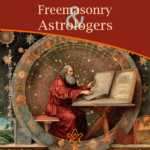 Unlocking the Mysteries: The Surprising Connection Between Freemasonry and Astrologers Revealed! Delve into the intriguing world of Freemasonry and explore its ties to astrological practices. Discover how these two distinct realms intersect, offering a fascinating glimpse into the esoteric interests of some Freemasons. Uncover the hidden links and unravel the enigmatic bond between Freemasonry and astrologers! |
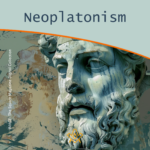 Neoplatonism, a philosophy with profound influence from the 3rd to the 6th century, merges Platonic ideals with Eastern thought, shaping Western and Middle-Eastern philosophy for two millennia. It emphasizes the unity of the individual with the supreme 'One', blending philosophy with theology and impacting major religious and philosophical movements, including Christianity and Islam. |
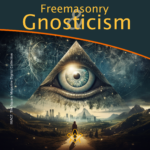 The enigmatic allure of Freemasonry's ancient rituals and Gnosticism's search for hidden knowledge capture the human spirit's endless quest for enlightenment. Between the stonemason's square and the Gnostic's divine spark lies a tantalizing intersection of philosophy, spirituality, and the pursuit of esoteric wisdom. Both traditions beckon with the promise of deeper understanding and moral elevation, inviting those who are drawn to unravel the tapestries of symbols and allegories. Whether through the fellowship of the lodge or the introspective journey of the soul, the paths of Freemasonry and Gnosticism represent a yearning to connect with something greater than ourselves—an impulse as old as time and as compelling as the mysteries they guard. |
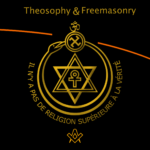 Embark on a journey through time and spirituality with our in-depth exploration of the Theosophical Society's Seal. This ancient emblem, rich with symbols, bridges humanity with the cosmos, echoing through the world's great faiths and diverse cultures. Our paper delves into the six mystical symbols, untangling their profound meanings and tracing their presence in historic art worldwide. Unaffiliated with worldly movements, these symbols open a window to esoteric wisdom. We also probe potential parallels with Freemasonry, seeking threads that might connect these storied organizations. Join us in unveiling the universal language of the spirit encoded within this enigmatic Seal. |
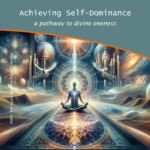 Discover the pathway to divine oneness through the concept of self-dominance. This thought-provoking essay explores the profound connection between self-control, spiritual growth, and achieving unity with the divine essence. With an interdisciplinary approach, it offers practical steps towards expanding consciousness and deepening our understanding of the divine. |
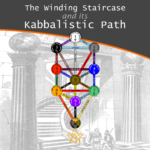 The Winding Staircase and its Kabbalistic Path The Winding Staircase in freemasonry is a renowned symbol of enlightenment. In this article, we explore its connection to Kabbalistic thought and how it mirrors the inner growth of a candidate as he progresses throughout his Masonic journey. From faith and discipline in Binah, to strength and discernment in Geburah, and finally to victory and emotional intuition in Netzach, each step represents a crucial aspect of personal development. Join us as we delve into the esoteric meanings of this powerful symbol. |
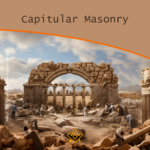 Unravel the mystic origins of Capitular Masonry, a secretive Freemasonry branch. Explore its evolution, symbolic degrees, and the Royal Arch's mysteries. Discover the Keystone's significance in this enlightening journey through Masonic wisdom, culminating in the ethereal Holy Royal Arch. |
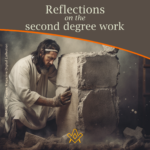 Reflections on the Second Degree Work Bro. Draško Miletić offers his reflections on his Second Degree Work – using metaphor, allegory and symbolism to understand the challenges we face as a Fellow Craft Mason to perfect the rough ashlar. |
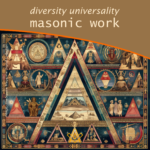 Diversity and Universality of Masonic Work Explore the rich tapestry of Masonic work, a testament to diversity and universality. Uncover its evolution through the 18th century, from the stabilization of Symbolic Freemasonry to the advent of Scottish rite and the birth of Great Continental Rites. Dive into this fascinating journey of Masonic systems, a unique blend of tradition and innovation. Antonio Jorge explores the diversity and universality of Masonic Work |
 Nonsense as a Factor in Soul Growth Although written 100 years ago, this article on retaining humour as a means of self-development and soul growth is as pertinent today as it was then! Let us remember the words of an ancient philosopher who said, when referring to the court jester of a king, “It takes the brightest man in all the land to make the greatest fool.” |
 Freemasonry: The Robe of Blue and Gold Three Fates weave this living garment and man himself is the creator of his fates. The triple thread of thought, action, and desire binds him when he enters into the sacred place or seeks admittance to the Lodge, but later this same cord is woven into the wedding garment whose purified folds shroud the sacred spark of his being. - Manly P Hall |
 By such a prudent and well regulated course of discipline as may best conduce to the preservation of your corporal and metal faculties in the fullest energy, thereby enabling you to exercise those talents wherewith god has blessed you to his glory and the welfare of your fellow creatures. |
 Jacob Ernst's 1870 treatise on the Philosophy of Freemasonry - The theory of Freemasonry is based upon the practice of virtuous principles, inculcating the highest standard of moral excellence. |
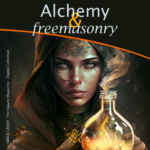 Alchemy, like Freemasonry, has two aspects, material and spiritual; the lower aspect being looked upon by initiates as symbolic of the higher. “Gold” is used as a symbol of perfection and the earlier traces of Alchemy are philosophical. A Lecture read before the Albert Edward Rose Croix Chapter No. 87 in 1949. by Ill. Bro. S. H. Perry 32° |
 The spirit of the Renaissance is long gone and today's globalized and hesitant man, no matter ideology and confession, is the one that is deprived of resoluteness, of decision making, the one whose opinion doesn't matter. Article by Draško Miletić, |
 A Mason's Work in the First Degree Every Mason's experiences are unique - here writer and artist Draško Miletić shares insights from his First Degree Work. |
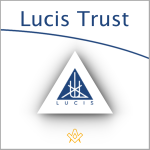 Initiation and the Lucis Trust The approach of the Lucis Trust to initiation may differ slightly to other Western Esoteric systems and Freemasonry, but the foundation of training for the neophyte to build good moral character and act in useful service to humanity is universal. |
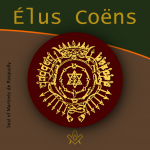 Who were the mysterious 18th century Élus Coëns – a.k.a The Order of Knight-Masons Elect Priests of the Universe – and why did they influence so many other esoteric and para-Masonic Orders? |
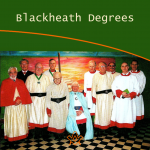 Bro. Chris Hatton gives us his personal reflections on the history of the 'house at Blackheath and the Blackheath Orders', in this wonderful tribute to Andrew Stephenson, a remarkable man and Mason. |
 Book Review - Cagliostro the Unknown Master The book review of the Cagliostro the Unknown Master, by the Editor of the book |
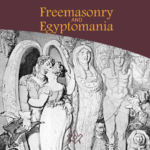 We explore fascinating and somewhat contentious historical interpretations that Freemasonry originated in ancient Egypt. |
 Is Freemasonry esoteric? Yes, no, maybe! |
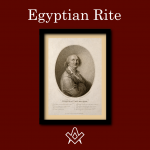 Egyptian Freemasonry, founder Cagliostro was famed throughout eighteenth century Europe for his reputation as a healer and alchemist |
masonic knowledge
to be a better citizen of the world
share the square with two brothers

click image to open email app on mobile device
